 In Naujoji Vilnia, a satellite town East of Vilnius, stands a memorial to the Soviet deportations in the 1940s, in the form of a vintage locomotive and a couple carriages. Along with the mass execution of Jews during the Nazi occupation 1941-1944, this is one of the great tragedies of the history of Lithuania that runs deep in the country’s veins. In two waves, from 1940-1941, and again from 1944-1953, approximately 300,000 Lithuanians were carted off on these trains, funneled via the Naujoji Vilnia station to settlements or Gulag camps in Siberia. Only a fraction made it back.
In Naujoji Vilnia, a satellite town East of Vilnius, stands a memorial to the Soviet deportations in the 1940s, in the form of a vintage locomotive and a couple carriages. Along with the mass execution of Jews during the Nazi occupation 1941-1944, this is one of the great tragedies of the history of Lithuania that runs deep in the country’s veins. In two waves, from 1940-1941, and again from 1944-1953, approximately 300,000 Lithuanians were carted off on these trains, funneled via the Naujoji Vilnia station to settlements or Gulag camps in Siberia. Only a fraction made it back.
Monthly Archives: March 2016
Brussels bureaucrats lending a hand
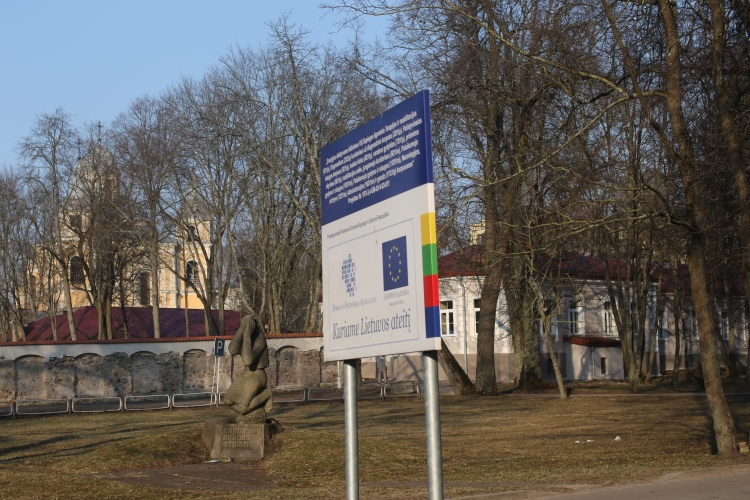 All over Vilnius, and indeed Lithuania, you can see these signs proclaiming “Creating the Future of Lithuania”, and emblazoned with a massive European Union flag. Temporary placards like the one in the picture announce ongoing projects, for which EU “structural funds” are used to help Lithuania upgrade its infrastructure to take the leap from its past as a poor, Eastern European country to its contemporary status as a growth engine for the EU. Smaller, more subtle EU-flagged signs adorn buildings and other real estate that has already been completed. In the period between 2007 and 2014, Lithuania spent 6.8 billion EU-euros from the structural funds. Between 2014 and 2020, another 8.4 billion euros have been earmarked for this country. To put that into perspective, the entire economic output of Lithuania in 2015 was 37 billion euros, so we’re talking, spread across six years, subsidies that are the equivalent of around one fifth of Lithuania’s economy in one year. The investments range from electricity interconnections to refurbishing old Soviet housing stock, and much of the refurbishment of the charming old town of Vilnius over the past decade can be attributed to this honeypot. As a result of the ubiquitous advertising, and the tangible results, the EU is generally seen as a force of good in Lithuania – a notion someone from a country like the UK or Greece might find difficult to comprehend these days.
All over Vilnius, and indeed Lithuania, you can see these signs proclaiming “Creating the Future of Lithuania”, and emblazoned with a massive European Union flag. Temporary placards like the one in the picture announce ongoing projects, for which EU “structural funds” are used to help Lithuania upgrade its infrastructure to take the leap from its past as a poor, Eastern European country to its contemporary status as a growth engine for the EU. Smaller, more subtle EU-flagged signs adorn buildings and other real estate that has already been completed. In the period between 2007 and 2014, Lithuania spent 6.8 billion EU-euros from the structural funds. Between 2014 and 2020, another 8.4 billion euros have been earmarked for this country. To put that into perspective, the entire economic output of Lithuania in 2015 was 37 billion euros, so we’re talking, spread across six years, subsidies that are the equivalent of around one fifth of Lithuania’s economy in one year. The investments range from electricity interconnections to refurbishing old Soviet housing stock, and much of the refurbishment of the charming old town of Vilnius over the past decade can be attributed to this honeypot. As a result of the ubiquitous advertising, and the tangible results, the EU is generally seen as a force of good in Lithuania – a notion someone from a country like the UK or Greece might find difficult to comprehend these days.
Neris, exposed
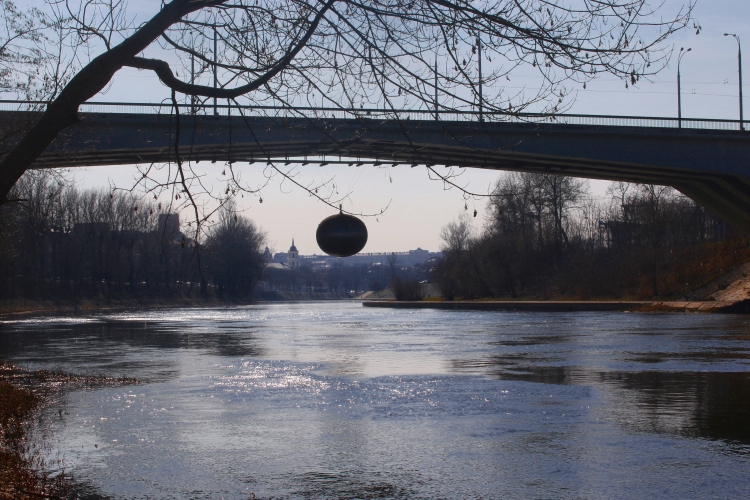 The spring sunshine is merciless at this time of year. As if to compensate for hiding behind clouds or under the horizon for half a year, it beats down with extraordinary intensity on a bare landscape that has nowhere to hide. You can almost hear the leaf buds swelling and popping all around, but yet there are no leaves or grasses to offer a shelter from the white-hot sunshine, and the eyes hurt with the brightness of it all. The Neris river has gone through a lot in the past months, from its demure late-winter dress of reds, browns and greens, to a jagged, edgy, frozen jigsaw puzzle in the depths of winter. It is now impatient and swollen, with a swirling, deep cover of swift water hiding the otherwise grassy banks. On land, there are no colours left. Just black-brown naked trees and bushes, and a rotting, dark-brown carpet of what remains of last year’s undergrowth. It won’t be long now before it all turns a pale shade of green, but for now, Vilnius lies there stunned by the brutality of the change of season.
The spring sunshine is merciless at this time of year. As if to compensate for hiding behind clouds or under the horizon for half a year, it beats down with extraordinary intensity on a bare landscape that has nowhere to hide. You can almost hear the leaf buds swelling and popping all around, but yet there are no leaves or grasses to offer a shelter from the white-hot sunshine, and the eyes hurt with the brightness of it all. The Neris river has gone through a lot in the past months, from its demure late-winter dress of reds, browns and greens, to a jagged, edgy, frozen jigsaw puzzle in the depths of winter. It is now impatient and swollen, with a swirling, deep cover of swift water hiding the otherwise grassy banks. On land, there are no colours left. Just black-brown naked trees and bushes, and a rotting, dark-brown carpet of what remains of last year’s undergrowth. It won’t be long now before it all turns a pale shade of green, but for now, Vilnius lies there stunned by the brutality of the change of season.
After the war
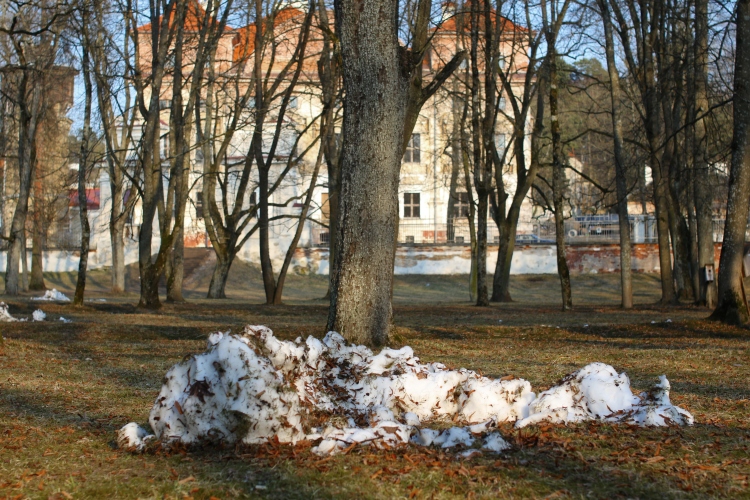 In the past weeks, spring has had many false starts, but as Easter drew to a close, the surest sign of spring approaching so far: the central heating in the apartment block we live in was switched off. Over the weekend, it snowed heavily, and kids made the most of the late-season wintry weather to engage in a massive snowball fight in Sapiegų rūmų parkas. There was enough of the white stuff to build proper snow fortresses for the warring parties to entrench themselves behind. But come Sunday, temperatures flipped firmly towards the warmer season, and after a days’ melt, all that was left of the weekend’s war games in the park were scattered piles of snow where the fortresses once stood, quickly melting away in the glowing sun,
In the past weeks, spring has had many false starts, but as Easter drew to a close, the surest sign of spring approaching so far: the central heating in the apartment block we live in was switched off. Over the weekend, it snowed heavily, and kids made the most of the late-season wintry weather to engage in a massive snowball fight in Sapiegų rūmų parkas. There was enough of the white stuff to build proper snow fortresses for the warring parties to entrench themselves behind. But come Sunday, temperatures flipped firmly towards the warmer season, and after a days’ melt, all that was left of the weekend’s war games in the park were scattered piles of snow where the fortresses once stood, quickly melting away in the glowing sun,
Pimped-up Easter Eggs
 Easter is something of a big deal in Lithuania. Today, on Easter Sunday, people dressed to their nines and trouped down to the many churches in town. But it’s not all pomp and circumstance. Eggs are, as in many other places, used as a symbol of the season – perhaps, again, more linked to non-Christian traditions than the Christian one that is celebrated these days. In Lithuania, there is the traditional dyed eggs used for egg hunts, but also more elaborate ones, sometimes made from wood to be more durable, that serve as more adult Easter decorations. Elsewhere, the typically Lithuanian verbos, or easter palms, and tulips, as well as assorted chicken-esque furry things in shades of green and yellow, serve as ornaments in windows and shops all over town.
Easter is something of a big deal in Lithuania. Today, on Easter Sunday, people dressed to their nines and trouped down to the many churches in town. But it’s not all pomp and circumstance. Eggs are, as in many other places, used as a symbol of the season – perhaps, again, more linked to non-Christian traditions than the Christian one that is celebrated these days. In Lithuania, there is the traditional dyed eggs used for egg hunts, but also more elaborate ones, sometimes made from wood to be more durable, that serve as more adult Easter decorations. Elsewhere, the typically Lithuanian verbos, or easter palms, and tulips, as well as assorted chicken-esque furry things in shades of green and yellow, serve as ornaments in windows and shops all over town.
Sunrise over the towers of Vilnius
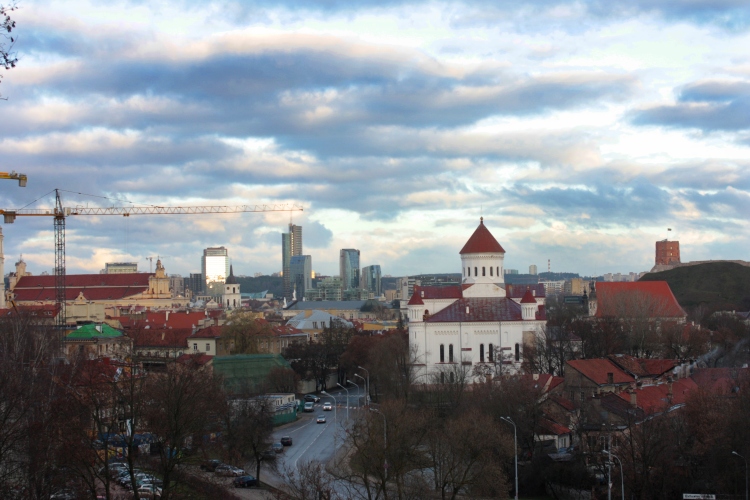 This is the view from Subačiaus gatvė, which is nice because it puts the old town north of the hill in the same frame as the skyscrapers north of the river. Just below the street where the photo was taken is a big grassy slope, and at the bottom, an open air market, Tymo Turgus. The big white church in the foreground is the orthodox cathedral of the Theotokos, the main Russian-orthodox church in the city standing on foundations laid in 1346.
This is the view from Subačiaus gatvė, which is nice because it puts the old town north of the hill in the same frame as the skyscrapers north of the river. Just below the street where the photo was taken is a big grassy slope, and at the bottom, an open air market, Tymo Turgus. The big white church in the foreground is the orthodox cathedral of the Theotokos, the main Russian-orthodox church in the city standing on foundations laid in 1346.
All-seasons-in-one
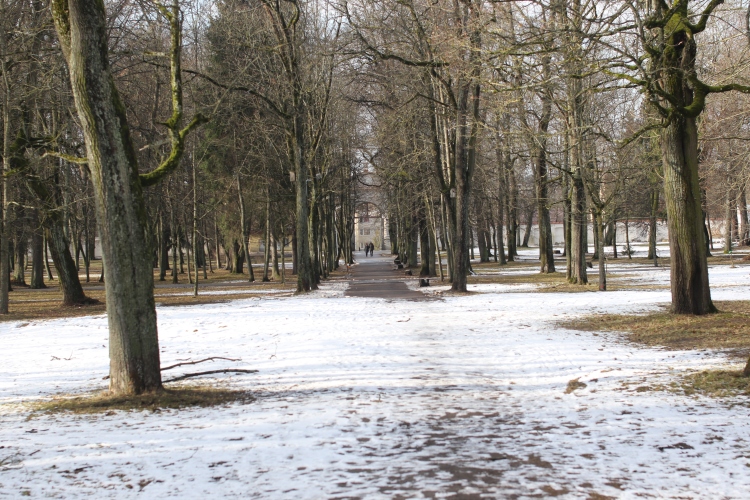 The weather Vilnius has been experiencing recently has really brought all the elements of the conflicting seasons of spring and winter into one overlapping Venn diagram. In a day, you’ll likely get a spot of horizontally targeted snow, some calm, warming spot of calm sunshine, a rain shower, and all of these at once if you get lucky. As we wait for the outcome of this battle of seasons to be resolved, the spectacle is fascinating.
The weather Vilnius has been experiencing recently has really brought all the elements of the conflicting seasons of spring and winter into one overlapping Venn diagram. In a day, you’ll likely get a spot of horizontally targeted snow, some calm, warming spot of calm sunshine, a rain shower, and all of these at once if you get lucky. As we wait for the outcome of this battle of seasons to be resolved, the spectacle is fascinating.
The yellow house on the hill
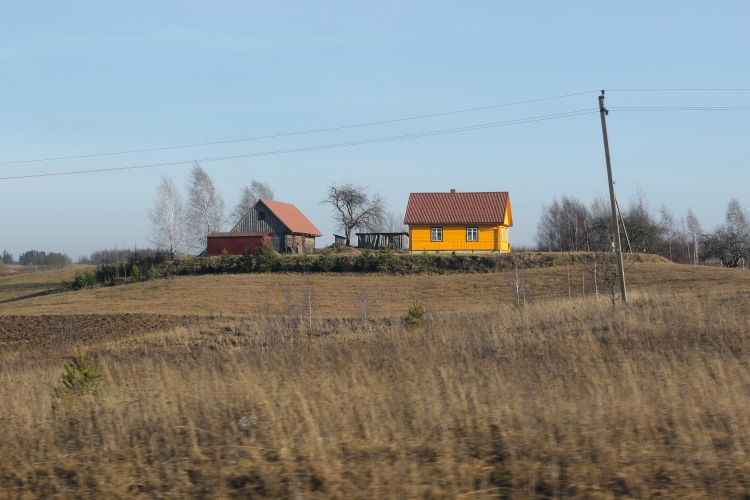 Lithuanians like to give their wooden houses a good lick of colour, and as you drive around the outskirts of Vilnius, you’ll come across houses sitting in manicured yards, glowing in warm yellows, verdant greens, bright reds and everything in-between. During the months of the year when the landscape is otherwise relatively uninspiring and drab, these spots of colour add a spot of fun to the scenery.
Lithuanians like to give their wooden houses a good lick of colour, and as you drive around the outskirts of Vilnius, you’ll come across houses sitting in manicured yards, glowing in warm yellows, verdant greens, bright reds and everything in-between. During the months of the year when the landscape is otherwise relatively uninspiring and drab, these spots of colour add a spot of fun to the scenery.
Vilnia river in winter dress
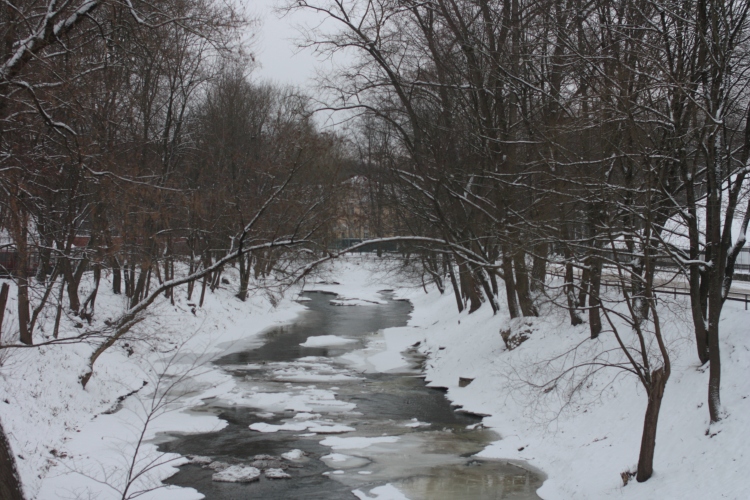 The Vilnia river is really the natural feature that gives Vilnius character, so it is indeed appropriate that the two share a name. This wintery river amid snow and ice, framed by bare trees, is the same river that in the late summer lazily meandered its way along the perimeter of the Vilnius old town, its waters shaded by the pregnant greenery from the overhanging branches from the trees that line its shores.
The Vilnia river is really the natural feature that gives Vilnius character, so it is indeed appropriate that the two share a name. This wintery river amid snow and ice, framed by bare trees, is the same river that in the late summer lazily meandered its way along the perimeter of the Vilnius old town, its waters shaded by the pregnant greenery from the overhanging branches from the trees that line its shores.
Brussels attacks – in memoriam
 After the Paris attacks in November, I hoped that would be the last time such a massive attack struck at the heart of Europe. Today, it happened again, in Brussels, and at least 34 people have lost their lives in a senseless attack. The bombs in the Brussels airport and the Maalbeek metro stop, at the heart of the EU quarter of the city, are not just an attack on Brussels, which like Paris has a knack for joie de vivre like few other places. It also targeted the EU, which is already under assault from the refugee crisis and a rising tide of hate-based politics. Lithuania is, as I already pointed out after the Paris attacks, a living example of what happens when the dark forces in the world get out of hand. If anything, the response to today’s atrocities must be to strengthen our resolve not to let such events drive us further down the path of vengefulness, hate, fear and isolationism.
After the Paris attacks in November, I hoped that would be the last time such a massive attack struck at the heart of Europe. Today, it happened again, in Brussels, and at least 34 people have lost their lives in a senseless attack. The bombs in the Brussels airport and the Maalbeek metro stop, at the heart of the EU quarter of the city, are not just an attack on Brussels, which like Paris has a knack for joie de vivre like few other places. It also targeted the EU, which is already under assault from the refugee crisis and a rising tide of hate-based politics. Lithuania is, as I already pointed out after the Paris attacks, a living example of what happens when the dark forces in the world get out of hand. If anything, the response to today’s atrocities must be to strengthen our resolve not to let such events drive us further down the path of vengefulness, hate, fear and isolationism.